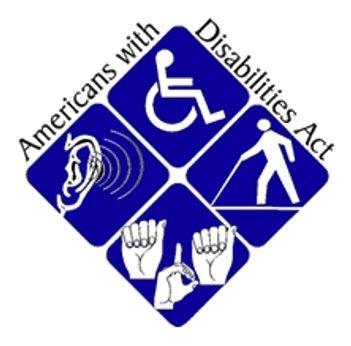
The ADA- The History of the Americans with Disabilities Act
demystifying accessibility policy
The Americans with Disabilities Act (ADA) is one of the most comprehensive pieces of civil rights laws in the United States. President George H.W. Bush signed it into law on July 26th, 1990. The legislation forbids discrimination and ensures people with disabilities get equal access to all aspects of mainstream American life.
That includes but is not limited to employment opportunities, access to goods and services, and participation in Local and State Government services and programs. In essence, the Americans with Disabilities Act is an equal opportunity law for people with disabilities according to Section 504 of the Rehabilitation Act of 1973.
ADA is modeled on the foundation of the Civil Rights Act of 1964, a law that forbids discrimination based on race, color, sex, religion, and national origin. With that out of the way, let's look at the history of the Americans with Disabilities Act.
Historical Milestones of the Americans with Disabilities Act
September 13th, 1960: The 1960 Social Security Amendments were signed into law. The provisions under this amendment included that persons with disabilities under 50 would also receive Social Security Disability Insurance benefits for the first time.
July 2nd, 1964: The Civil Rights Act was signed into law by President Lyndon B. Johnson. The law banned employment discrimination and segregation in public places based on sex, religion, color, race, and nationality. This law didn't outrightly address disabilities. However, it served a crucial role in history, setting the foundation for civil rights legislation. Advocates of people with disabilities referenced the language used in the Civil Rights Act.
September 26th, 1973: The Rehabilitation Law was signed into law, and section 504 banned discrimination against people with disabilities in organizations that received Federal Funds. The law facilitated significant legal change, shed some light on prejudice expressed towards people with disabilities, and acknowledged the existence of discrimination in the US.
November 27th, 1975: The Individuals with Disabilities Act was signed into law which required all eligible children with disabilities to receive free and appropriate education in a suitable environment. This is currently the most discussed law when it comes to learning disabilities.
April 5th, 1977: The San Francisco sit-in was led by Judy Heumann. Protesters occupied the Department of Health, Education, and Welfare (HEW) regional office and demanded that Joseph Califano establish legally binding standards for 504. No person should be "excluded from the participation, be denied the benefits of, or be subjected to discrimination" under any program funded by federal funds, according to Section 504 of the Rehabilitation Act (1973).
March 22nd, 1988: The Civil Rights Restoration Act of 1987 becomes law. Disability activists joined forces with those speaking for women and minority groups in the first significant coalition movement involving the disability community to promote The Civil Rights Restoration Act. The Act has ensured a more comprehensive application of Anti-discrimination laws in organizations that receive federal funding.
August 30th, 1988: A Congressional Task Force was established by Congressman Major Owens to educate the public and Congress on discrimination against people living with disabilities. The task force comprised civilians and didn't receive federal funding. Justin Dart and Dr. Elizabeth M. Boggs, both who were activists, co-chaired the task force.
March 12th, 1990: The Historic Capital Crawl happened in Washington DC. To put pressure on Congress to enact the Americans with Disabilities Act, members of ADAPT (Americans Disabled for Accessible Public Transit) abandoned their mobility aids and climbed the Capital Steps on the National Mall. The demonstration was a turning point in disability activism.
July 26th, 1990: President George H.W Bush signed The Americans with Disabilities Act into Law. ADA was created to provide people with disabilities with equal access to opportunities. It affirms and defends the rights of people with disabilities in relation to employment, government services, and other facets of public life. It is modeled after the Civil Rights Act (1964).
June 22nd, 1999: The Supreme Court announced the "Sutton Trilogy," which constrained the ADA's application. The Supreme Court drew a line under the ADA's protections when it ruled in the cases of the Sutton Trilogy. The Supreme Court decided in this case that services for people with disabilities must integrate them whenever possible.
September 25th, 2008: The ADA Amendments Act was signed into law. Congress passed the ADAAA to overturn some Supreme Court rulings that were thought to have restricted the application of the ADA and narrowed the definition of "disability" beyond what Congress initially intended. The US Equal Employment Opportunity Commission revised its disability-related rules after the ADAAA was passed, and the legal definition of "disability" was made as inclusive as possible.
September 27th, 2017: The Americans with Disabilities Act Education and Reform Act is opposed by The Consortium for Citizens with Disabilities and Allies in an open letter to Congress. The bill was approved by the House but was rejected by the Senate. The ADA ERA Act would have taken away incentives that have been put in place for companies to follow ADA regulations. This is a sobering reminder that there is still a long way to go in the fight for civil rights protections.
Ready to Get Started?
Contact us today to learn more about our home modification services and how we can help make homes safer and more accessible.
Contact Us Today